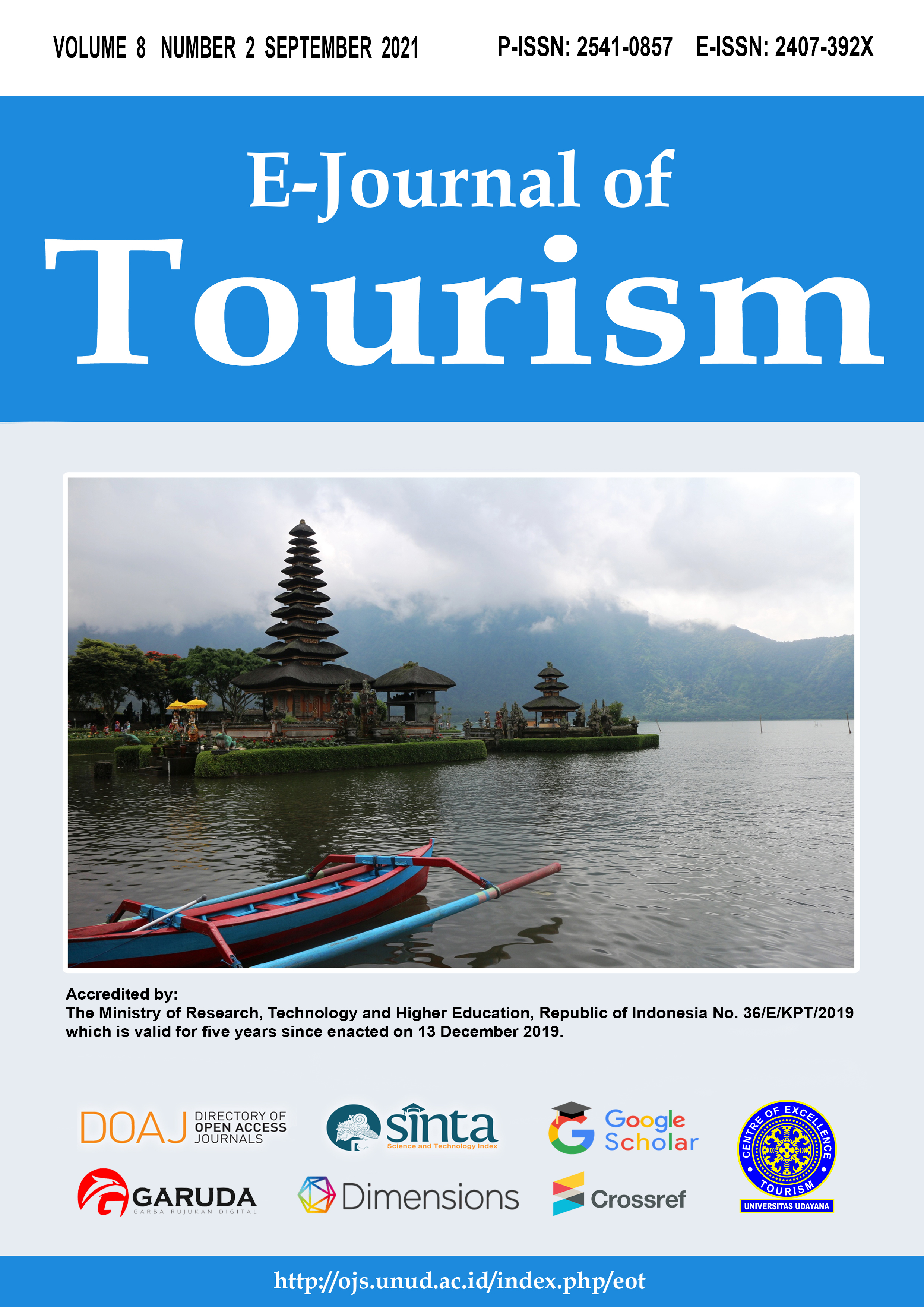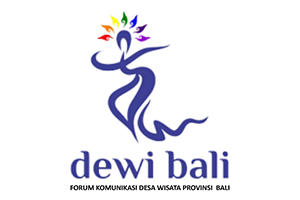A Proposed Partnership Scheme of Bangkok Mass Transit System (BTS) and MICE Corporations: Passenger Satisfaction and Tourism Transport Policy Approach
Abstract
This research examined and proposed a partnership scheme between Bangkok Mass Transit System (BTS) and MICE corporations (MICE: meetings, incentives, conventions & exhibitions) where one representative from BTS and six respondents from six different MICE corporations volunteered in the study. The research was conducted by two different sequences and undertaken by a mixed methodology. Out of 400 ridership satisfaction questionnaires, 300 were validated to have ridership experiences to MICE venues with BTS. Post-passenger satisfaction study, the results were used to inform BTS and MICE corporations to navigate in-depth interviews. SPSS runs to quantify travel frequencies, demographic profiles, and passenger satisfaction while thematic analysis framed the interview results. The finding underscored the two major significances as they correspond to the objective of the study: (1) The overarching governance proposal of BTS’s short-term partnership scenario with MICE corporations - where an informed policy benchmark from “England Strategic Action Plan for Tourism 2010-2020” robustly examined; (2) the novelty over the deficient study of integrated transport-MICE strategic planning within the Southeast Asian region.
Downloads
References
Albalate, D., & Bel, G. (2009). Tourism and urban public transport: Holding demand pressure under supply chain constraints. Tourism Management, 31(2010), 425-433.
Antonucci, L., Crocetta, C., FD d’Ovidio., & Toma, E. (2014). Passenger satisfaction: A multi-group analysis. Quality and Quantity, 48(1), 337-345.
Bangkok Mass Transit System (2019). Company profile and business. Retrieved from https://www.bts.co.th/eng/info/info-history.html on December 10, 2019.
Bank of Thailand (2021). White paper: Revitalising Thailand’s tourism sector. Retrieved from https://www.bot.or.th/Thai/MonetaryPolicy/EconomicConditions/AAA/250624_WhitepaperVISA.pdf on September 15, 2021.
Celiński, I., & Sierpiński, G. (2014). Real time model for public transport management. Scientific Journal of Logistics, 10(1), 31-41.
Chew. J. (1987). Transport and tourism in the year of 2000. Tourism Management, 8(2), 83-85.
de Ona, J., de Ona, R., & Calvo, F. J. (2012). A classification tree approach to identify key factors of transit service quality. Expert Systems with Applications, 39(12), 11164-11171.
England Strategic Action Plan (2010-2020). Retrieved from https://www.nationalparksengland.org.uk/__data/assets/pdf_file/0029/26597/Visit-England-Transport-and-Tourism-Action-Plan-ENPAA-response-March-2012.pdf on August 1, 2020
Goulding, C. (2017). Navigating the complexities of grounded research in advertising. Journal of Advertising, 46(1), 61-70.
Gronau, W., & Kagermeier, A. (2007). Key factors for successful leisure and tourism public transport provision. Journal of Transport Geography, doi: 10.1016/j.jtrangeo.2006.12.008
Hall, D. R. (1999). Conceptualising tourism transport: Inequality and externality issues. Journal of Transport Geography, 7(3), 181-188.
Kaul, R. (1985). Dynamics of tourism: A trilogy, 111. New Delhi: Transportation and Marketing.
Khadaroo, J., & Seetenah, B. (2007). Transport infrastructure and tourism development. Annals of Tourism Research, 34(4), 1021-1032.
Krungsri (2019). Mass rapid transit operators: Thailand industry outlook 2019-21. Retrieved from https://www.krungsri.com/bank/getmedia/71e66d1b-5790-44f2-82dc-4c1e8509f193/IO_Mass_Transit_190513_EN_EX.aspx on January 12, 2020.
Lumdson, L., & Page, S. J. (2004). Tourism and transport: Issues and agenda for the new millenium. Oxford: Elsivier.
McIntosh, R. W., Goeldner, C. R., and Ritchie, J. R. B. (1995). Tourism: Principles, practices, philosophies. New York: John Wiley and Sons.
Meet in Thailand (2020). Retrieved from https://www.meetinthailand.com/business-event on July 20, 2020.
Mill, R. C., & Morrison, A. M. (1992). The tourism system: An introductory text. Englewood Cliff New Jersey: Prentice Hall.
Ministry of Tourism and Sport (2021). International Tourist Arrival. Retrieved from https://www.mots.go.th/mots_en/more_news_new.php?cid=330 on September 15, 2021.
Mouwen, A. (2015). Drivers of customer satisfaction with public transport services. Transportation research: Part A: Policy and Practice [serial online], 78, 1-20.
Noichan, R., & Dewancker, B. (2018). Analysis of accessibility in urban masss transit node: A case study in Bangkok transit station. Sustainability, 10(4891); doi:10.3390/su10124819.
OECD. (2017). OECD economic surveys United Kingdom. Retrieved from http://www.oecd.org/economy/surveys/United-Kingdom-2017-OECD-economic-survey-overview.pdf on August 5, 2019.
Ortujzar, J. D., & Willumsen, L. G. (1991). Flexible long range planning using low cost information. Netherlands: Kluwer Academic Publishers.
Page, S.J. (1994). Transport and tourism global perspectives (2nd edn.). Harlow: Pearson/Prentice Hall.
Page, S. J. (2005). Tourism and transport: Global perspective (2nd edn.). Harlow: Pearson/Prentice Hall.
Pavlina, P. (2015). The factors influencing satisfaction with public city transport: A structural equation modelling approach. Journal of Competitiveness, 7(4), 18-32.
Prideaux, B. (2000). The role of the transport system in destination development. Tourism Management, 21(1), 53-63.
Replogle, M. A.., & Fulton, L. (2014). A global high shift scenario: Impact and potential for more public transport, walking, and cycling with lower car use. New York: Institute for Transportation and Development Policy (ITDP). Retrieved from: http://www.itdp.org/wp-content/uploads/2014/09/A-Global-High-Shift-Scenario_WEB1.pdf on August 5, 2019.
Sarma, M. K. (2003). Towards positioning a tourist destination: A study of Northeast India. ASEAN Journal on Hospitality and Tourism, 2(2), 104-119.
Shaw, E. (1999). A guide to the qualitative research process: Evidence from a small firm study. Qualitative Marketing Research: An International Journal, 2(2), 59-70
Shiau, W., & Luo, M. M. (2012). Factors affecting online group buying intention and satisfaction: A social exchange theory perspective. Computer in Human Behaviour, 28(6), 2431-2444.
TCEB (2019). MICE: Promising key industry. Retrieved from https://www.businesseventsthailand.com/en/key-industries on December 10, 2019.

This work is licensed under a Creative Commons Attribution 4.0 International License.
The copyright of the received article shall be assigned to the journal as the publisher of the journal. The intended copyright includes the right to publish the article in various forms (including reprints). The journal maintains the publishing rights to the published articles.




















